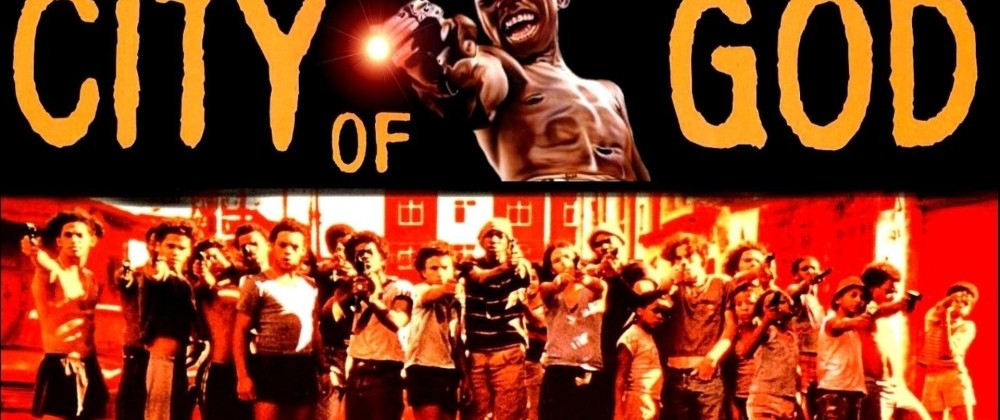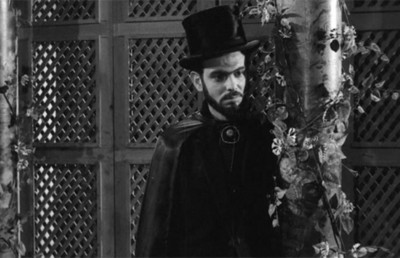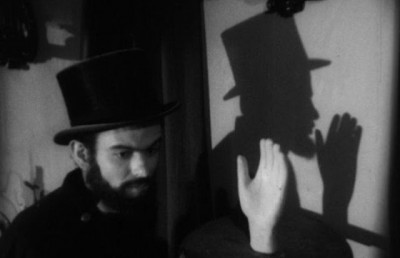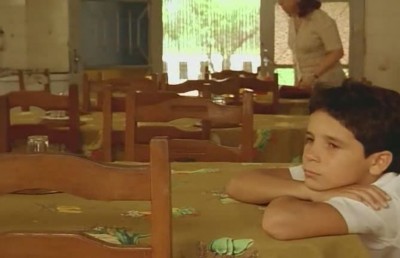A Brief Introduction to Brazilian Cinema
Brazilian Film History

The largest Latin American country, both in geographic size and population, by far, Brazil is also the home of an important national cinema, which has received less recognition in North America and other parts of the world than it has deserved, until the very recent international success of Central do Brasil (Central Station, directed by Walter Salles, 1998) and Fernando Meirelles/Katia Lund’s Cidade de Deus (City of God, 2002).
The first screening of films in Brazil took place in 1896, only six months after the very first Lumiere Brothers showing in Paris. In 1898, an Italo-Brazilian, Affonso Segreto began to make films and from 1900, locally made films began to dominate Brazilian screens. Indeed, the period 1908–1912 has been called the bela época, the “golden age” of Brazilian cinema, where production reached as high as 100 short films per year. After North American businessmen were welcomed to exploit the Brazilian film exhibition market in 1911, foreign films began to take over. Increasingly, during the remaining years of silent cinema, Brazilian filmmakers were relegated to producing newsreels and documentaries. But some fiction filmmaking emerged out of this field, including the São Paulo-based Italian immigrant, Gilberto Rossi’s productions of which the short Exemplo Regenerador (Moralizing Example, 1919), directed and written by the Spaniard, José Medina, is the only surviving example of the group’s work. Brazilian cinema was sustained through the 1920s by filmmakers working far from the urban centres of Rio de Janeiro and São Paulo in regional “cycles.” These included Silvinio Santos in Manaus (Amazonia), Edson Chagas and Gentil Roiz in Recife (Pernambuco) and, especially, Humberto Mauro working in Cataguases (Minas Gerais). Such “independent “ filmmaking naturally veered towards the “avant-garde” and one film made in this vein, Limite (The Boundary, 1930), directed by 18-year old Mario Peixoto, although not widely seen at the time, has since gained such notoriety that it topped the list of the “30 most significant films in the history of Brazilian Cinema” by a poll of Brazilian film critics in the 1980s.
With the coming of sound, and a language problem for its Portuguese-speaking audiences if they were to continue to watch Hollywood films, Brazilian cinema finally industrialized. Adhemar Gonzaga founded the Cinédia Sudios in Rio and a new, very Brazilian genre came to dominate its output, the chanchada, which derived from the Hollywood “revue” and backstage musicals mixed with Brazilian comic theatre and carnival. Carmen Miranda became a star at Cinédia and her “defection” to Hollywood precipitated a wave of Brazilian (and other pan-Latin American) themed films as part of a “Good Neighbor” policy, which did nothing to promote Latin American films in the USA, and whose most notable achievement was the unfinished Orson Welles docu-fiction, It’s All True (1941–42). In 1943, Moacyr Fenelon founded the Atlântida studios in Rio, where the chanchada form was perfected, wherein parody was increasingly incorporated, partially on the understanding that Brazilian films could never match the technical brilliance of Hollywood. Here, the careers of a great comic team, Oscarito and Grande Otello were developed. Typically, they appeared in Carnaval Atlântida (1952, directed by José Carlos Burle) where a film producer named Cecilio B. de Milho is attempting to film the life of Helen of Troy in the Hollywood “epic” manner. Oscarito plays an old classics teacher, Professor Xenofontes, who is aiding the filmmakers, while Grande Otello as a carioca malandro (a typical Rio scoundrel) helps to convince the producers that the film should be less serious, more popular, and perhaps even completely unfaithful to the original. [1] The next, and most ambitious major Brazilian studio effort, Vera Cruz, in São Paulo worked directly against the perceived vulgarity of popular chanchada in attempting to produce films that could compete on every level with foreign productions. Unfortunately, the Vera Cruz filmmakers neglected to take into account the tastes of Brazilian audiences, providing them with sophisticated, but European-inflected films, and the company folded after making only 18 feature films in 1954. Their biggest success was the very Brazilian, O Cangoceiro (The Bandit, 1953, dir., Lima Barreto), breaking local box office records, winning two prizes at Cannes in 1954, and being distributed in 22 countries. Alberto Cavalcanti, the most successful Brazilian-born film director before the 1960s, had been hired by Vera Cruz in 1949 as its head of production, but he left before its bankruptcy (he may have been fired) and made two more films for another company, one of which, O Canto do Mar (Song of the Sea, 1953), in its “realism” looked forward to the greatest period in Brazilian cinema history, the Cinema Nôvo of the 1960s.
The most significant director of the period leading up to Cinema Nôvo was Nelson Pereira dos Santos, who has been called the “father,” the “conscience,” and, even the “Pope” of the movement. In 1954, with the making of Rio Quarenta Graus (Rio 40°), dos Santos ushered in the kind of independent, low-budget filmmaking that became characteristic of the Brazilian new cinema. In 1953, dos Santos had worked as an assistant to Alex Viany on Agulha no Palheiro (Needle in the Haystack) which was the first Brazilian feature to adopt the principles of Italian neo-realism, such as shooting on location, using non-professional actors, and dealing with contemporary, popular subject matter in a very simple, direct, non-dramatic manner. Dos Santos was radically opposed to the Hollywood-style model imitated by earlier attempts at a Brazilian industry and considered his adoption of neo-realist principles to be a “political” act. Rio 40° begins with a popular samba [“Voz do Morro”] from the most recent carnival, but the tight narrative form of the chanchada is rejected for an episodic structure in which central characters are replaced by the city of Rio de Janeiro and its people. In its focus on poor Afro-Brazilians and their interaction with other levels of society in the realms of futebol (soccer) and carnival—the two cultural activities that are most relevant to the lives of the poor majority of Brazilians—Rio 40° lay the groundwork for a film movement which would tell the truth about the miserable plight of Brazil’s marginals, while championing the richness of their culture.
Randal Johnson and Robert Stam, the two key historians of Brazilian cinema in the English language, divide Cinema Nôvo into three phases, the first running “from 1960 to 1964, the date of the first coup d’état; from 1964 to 1968, the date of the second coup_–within–the–_coup; and from 1968 to 1972.” [2] The first phase was characterized by opposition to commercial cinema in all its forms, where filmmaking was conceived as political, and against neo-colonialism. Typically, the films of the first phase dealt with “the problems confronting the urban and rural lumpen-proletariat: starvation, violence, religious alienation, and economic exploitation.”3 The films did not shy away from depicting the harsh reality of life, but nevertheless maintained a certain optimistic outlook, perhaps as a reflection of the youthfulness of the predominantly young filmmakers. One of these was Glauber Rocha, who is now generally regarded as having been the greatest of all Brazilian filmmakers. His first feature film was Barravento (The Turning Wind, 1962), a story of a Bahian (mainly Afro-Brazilian) fishing community, which achieves a dialectical synthesis between religious alienation and progress and between past and present fishing methods. In its strange combination of realist elements, including on-location shooting and the employment of non-professional actors, with Eisensteinian montages and delirious camera movements, Barravento looks ahead to Rocha’s second feature, Deus e o Diabo na Terra do Sol (literally, “God and the Devil in the Land of the Sun” but given the English title “Black God, White Devil,” 1964), and marks the originality of his work. Black God, White Devil is set in the sertão, the legendary, inhospitable, drought-stricken region of Brazil’s nordeste (northeast), where rain usually only comes in the form of flash-floods. It combines syncretic nordeste myths with popular verse, cordel literature and indigenous Brazilian music, both classical and folk, and stylistically mixes tableaux staging and melodramatic acting, filmed in realist long takes with jerky camera movements interlaced with jump-cuts. The principal characters are itinerant sertanejo peasants who interact with fervent religious followers (beatos) of the black mystic Sebastião and various bandits, mostly good cangoceiros gone bad, and who are ultimately spared by the very bad hired “killer of cangoceiros,” Antonio das Mortes. Other key films of the first phase are Ruy Guerra’s dialectical anti-militarist, Os Fuzis (The Guns, 1964) which demystifies mysticism and where the characters of a young soldier, Mário and a truckdriver, Gaúcho, are politicised over the course of the film, Carlos Diegues’ Ganga Zumba (1963) on slave revolt, and dos Santos’ Vidas Secas (Barren Lives, 1963), a definitive predominantly realist exposé of one family’s struggle to live on the sertão.
During the mid-1960s, democracy was increasingly undermined in Brazil by the authoritarian military dictatorship, and foreign, especially North American capital investment was encouraged. In the words of Johnson and Stam, “Many filmmakers, not surprisingly, poked around the smouldering ruins of democratic populism. If the films of the first phase were optimistic, those of the second phase are anguished cries of perplexity; they are analyses of *failure*—of populism, of developmentalism, and of leftist intellectuals.”4 Nevertheless, the left remained strong, and many films intensified the political struggle from the left, while the city regained its prominence as a setting. Key films include Luiz Sérgio Person’s São Paulo S. A. (1965), Carlos Diegues’ A Grande Cidade (The Big City, 1966) and Rocha’s Terra em Transe (Land in Anguish, 1967). Terra em Transe recounts the political involvements of a poet, Paulo Martins in the fictional South American country of Eldorado. It can be understood as an allegory for Brazil’s recent past in particular and Latin American politics in general. It can also be viewed as an exploration of the role of the artist in contemporary Brazilian society: Paulo works as a journalist and even makes a film, which functions as a film-within-the-film. In these aspects, Terra em Transe ideally fits Johnson and Stam’s declaration that films of the second phase “tend toward self-referentiality and anti-illusionism.”5
During the 1960s, in the wake of declining opportunities to exhibit their films, Cinema Nôvo practitioners founded their own distribution company, Difilm along with commercial producer Luiz Carlos Barreto. They also attempted to make more commercial films, and, with Macunaima (directed by Joaquim Pedro de Andrade, 1969) the movement achieved its first real dual success: at the box office and with critics. Based on an important Brazilian “Modernist rhapsody”/novel of the same title written by Mário de Andrade (no relation) in 1926, Macunaíma, the film is also the key work of the “cannibal-tropicalist” third and final phase of Cinema Nôvo. After the second coup in 1968, the repressive regime introduced censorship, so that filmmakers were forced to be indirect in their approach, using irony and allegory. Director Joaquim Pedro de Andrade followed these trends, but parody was his central strategy. The Brazilian B-movie tradition of musical comedy, chanchada is recalled through caricature and the rediscovery of the great comedian Grande Otello who, in his sixties, plays the title character, Macunaíma, as a baby. The film also comically satirises Brazil’s illusory harmonious racial mix as well as its “Alliance for Progress” with the U.S., and in its gaudy, carnivalesque mise-en-scène, coupled with its absurd dialogue full of proverbs, accompanied by inappropriate folk songs, Macunaíma provides a rich, entertaining commentary on contemporary Brazilian society. At the end of the film Macunaíma is left alone in the Amazonian jungle, where the only colours are those of the Brazilian flag—yellow straw huts and bananas, green vegetation and blue sky—and he jumps into a pool to chase after the elusive goddess Uiara. Blood emerges from the muddy (yellow) water (blue), seeping into the “hero’s” all green jacket, which floats alone on the water’s surface, while a patriotic anthem mocks the action. In this, the film’s final shot, Andrade’s own statement on his film is clearly represented: “Macunaíma is the story of a Brazilian devoured by Brazil.” Other key films of the third phase include Nelson Pereira dos Santos’ Como era Gostoso o Meu Francês (How Tasty Was My Little Frenchman, 1971), which is like a mock-anthropological film made from the perspective of cannibalistic Amerindian natives meeting the European colonizers, and extremely allegorical works by Guerra, Os Deuses e os Mortos (The Gods and the Dead, 1970) and Rocha’s O Dragão da maldade contra o Santo Guerreiro (literally translated as “The Dragon of Evil Against the Holy Warrior,” but given the English title, “Antonio das Mortes,” 1969).
The depressing mood of the period was captured by a group of young, breakaway directors who made ultra-low budget, deliberately “bad,” nihilistic, virtually “anti-cinema” udigrudi (underground) films. Mostly concurrent with the third phase of Cinema Nôvo, films such as O Bandido da Luz Vermelha (Red-Light Bandit, dir., Rogério Sganzerla (1968), Matou a Família e Foi ao Cinema (Killed the Family and Went to the Cinema, dir., Júlio Bressane, 1969), and Bangue Bangue (Bang Bang, dir., Andrea Tonacci, 1971) suggested an aggressive counter cinema with their titles, alone. The filmmakers of what later became known as the Cinema Marginal movement rejected what they called the Cinema Nôvo Richo (Nouveau-riche Cinema) and argued replacing Rocha’s “aesthetics of hunger” with an aesthetics of lixo (garbage).6 At the time, these (mostly) anti-intellectual films were disliked intensely by the (mostly) well-educated Cinema Nôvo filmmakers and critics, and another, ultimately more commercial director was also associated with udigrudi, even though his career began much earlier, José Mojica Marins.7
Ironically, under one of the most repressive regimes in Brazilian history, when the richest entrepreneurs were given free reign, the state became involved in film production, distribution and exhibition to such a degree that the 1970s became the most successful era in the country’s film history, commercially, at least. In 1966, the National Film Institute (INC) was created and in 1967 production subsidies were introduced. In 1969 another state agency, Embrafilme was formed, initially to promote Brazilian films abroad and by 1975 it had absorbed all of the functions of INC and was enforcing a screen quota as well as subsidizing local production.8 From 1966 to 1971, the annual Brazilian film production climbed from 28 to 94, and peaked at 102 in 1980, the highest number of feature films ever produced in Brazil in a single year, whereas the screen quota which was raised provisionally to 63 days per year per theatre in 1969 was set at 140 days per year in 1980.9 Unfortunately, these statistics are not at all reflective of quality. Although directors such as Glauber Rocha, Rui Guerra and Carlos Diegues who had been effectively forced into exile during the most repressive years of 1971-72, returned to their home country during the boom years, and although some very high quality films were made, a new genre, porno chanchada increasingly dominated the film industry. Low interest loans helped popularise the new kind of erotic comedy with A Viúva Virgem (The Virgin Widow, dir., Pedro Rovai), A Infidelidade ao Alcance de Todos (Infidelity Within Everyone’s Reach, by Anibal Massaini Neto and Olivier Perroy), and Os Mansos (Lenient Husbands, co-directed by Royai) all received loans in 1972, generally regarded as the first year of porno chanchada. Disturbingly, by 1981 over 70% of all Brazilian feature film production was pornographic —and less “erotic” and “comic” than before and more “hard-core”— and only 1 of all the 80 films made was neither porn nor produced by Embrafilme. Additionally fully 20 of the top grossing 30 films in 1988 were “pornographic,” perhaps the nadir of commercial Brazilian film production.10
On a more positive note, there were many good films made in the 1970s and early 1980s including Argentine-born Hector Babenco’s seminal, critical look at the world of street children, Pixote (1980), 23 year-old Bruno Barreto’s erotic adaptation of Jorge Amado’s Dona Flor e Seus Dois Maridos (Dona Flor and Her Two Husbands, 1976) which broke all Brazilian box office records and introduced the world to Sonia Braga, and three important first features directed by women, Ana Carolina’s Mar de Rosas (Sea of Roses, 1977), Japanese-Brazilian Tizuka Yamasaki’s Gaijin (1980) and NYU-educated, late bloomer, Suzana Amaral’s A Hora da Estrela (The Hour of the Star, 1985). Also at the end of the 1980s, Brazil experienced the widespread creative production of short films, and with the advent of relatively inexpensive video equipment, significant work was being made by indigenous groups who, previously, had never had access to any kind of film production.
In 1989, the year in which the country experienced the most democratic election in over a century, Brazilian film production slumped to 25 features and in April 1990, on the same day that the government froze a percentage of all bank accounts, the Ministry of Culture was closed and Embrafilme was disbanded. The Brazilian film industry virtually collapsed overnight. In 1991 only 9 Brazilian feature films were released, and in 1992 only 6 Brazilian features appeared in local theatres. In 1993 amidst continuing financial and political crises a new Ministry of Culture promised $25million support for Brazilian film and in the following year, 10 locally-made features were released.11 By 1998, Brazilian feature film production had climbed back up to 40 titles, Bruno Barreto’s O que e Isso Companheiro (Four Days in September) was nominated for the U.S. Academy Award for Best Foreign Language film and Walter Salles’ Central Station won the top prize, the Golden Bear at the Berlin International Film Festival.
Endnotes
1 I am grateful for Ana López’s discussion of Carnaval Atlântida as well as other important films I’ve been unable to see such as O Canto do Mar and Red Light Bandit in the book that I co-edited with Timothy Barnard, South American Cinema: A Critical Filmography, 1915–1994 (Austin, TX: University of Texas Press, 1998 [NY: Garland, 1996]), pp. 112-114, 116-118, 151-152. In this essay, I also refer to my own texts from this book quite freely.
2 See, “The Shape of Brazilian Film History,” in Brazilian Cinema, Expanded Edition, edited by Johnson and Stam (New York: Columbia University Press, 1995 [Associated University Presses, 1982), pp. 30, 32. This is the best introduction to the subject.
3 Ibid, pp. 33-34.
4 Ibid, p. 35.
5 Ibid, p. 36
6 See Ana López, “O Bandido da Luz Vermelha,” in Barnard and Rist, op. cit., p.151.
7 See Donato Totaro’s piece on Marins’ first horror film, A Meia-Noite Levarei Sua Alma (At Midnight I’ll Take your Soul, 1963), in Ibid., pp. 137-139.
8 For a detailed exposition of the Brazilian film industry in this period see “The Instituto National do Cinema, 1966–1975,” and “Embrafilme, CONCINE, and a New Direction in State Policy,” in Randal Johnson’s The Film Industry in Brazil: Culture and the State (Pittsburgh, Pa: University of Pittsburgh Press, 1987), pp. 104-170.
9 Ibid, Table 16, p. 132; Table 24, p. 169; Table 32, p. 185, in “Moving Toward Crisis, 1980–1984.”
10 See Randal Johnson, “The Rise and Fall of Brazilian Cinema, 1960–1990,” in Johnson and Stam, op. cit., pp. 363-64.
11 Much of the information on recent years is derived from Variety International Film Guide annuals and various issues of the weekly journal, Variety. I’m especially indebted to João Luiz Vieira for the “Chronology” provided in the catalogue he edited on the occasion of the exhibition, Cinema Nôvo and Beyond at The Museum of Modern Art, New York, November 13, 1998 – January 22, 1999, pp. 172-73.














